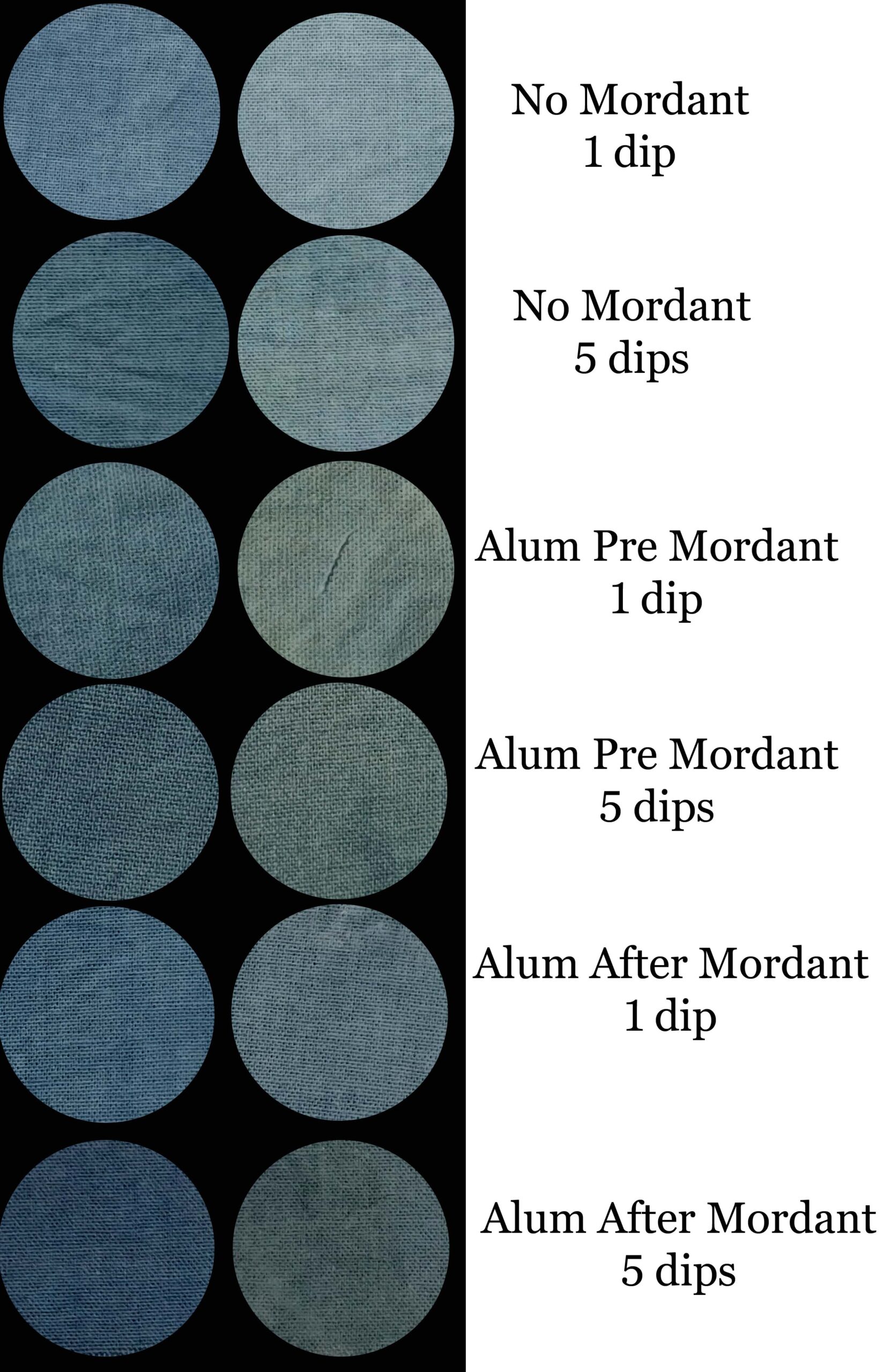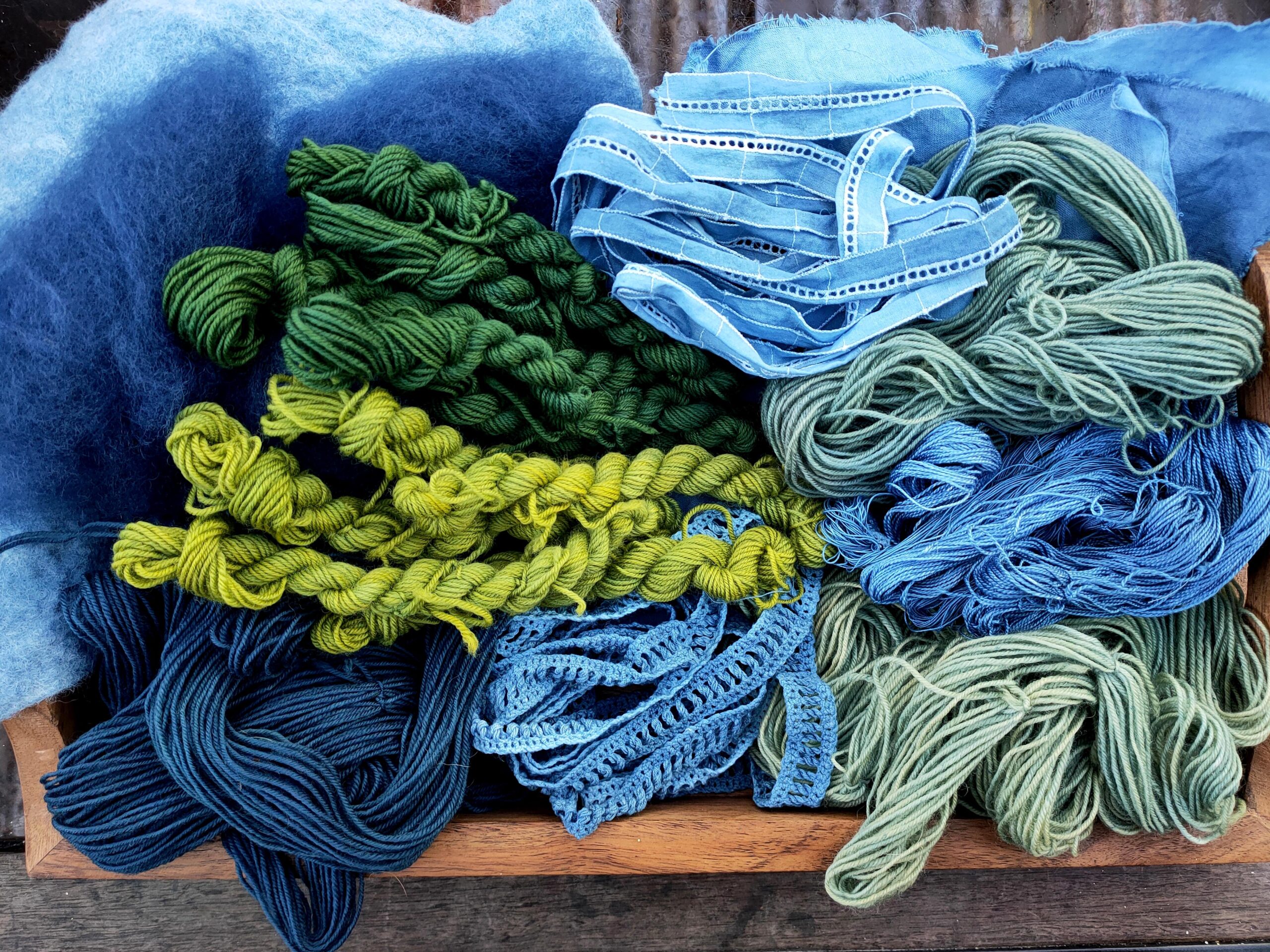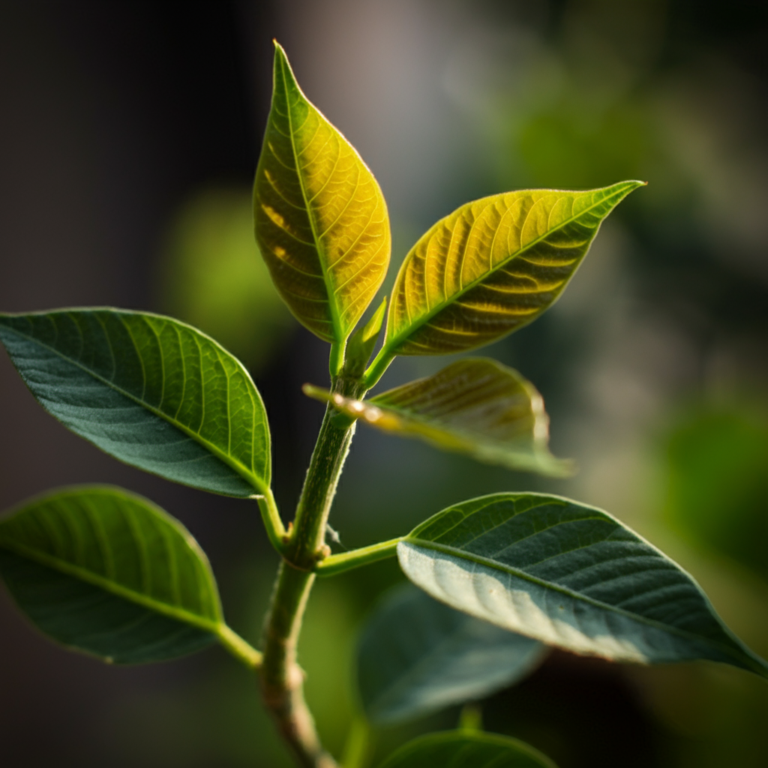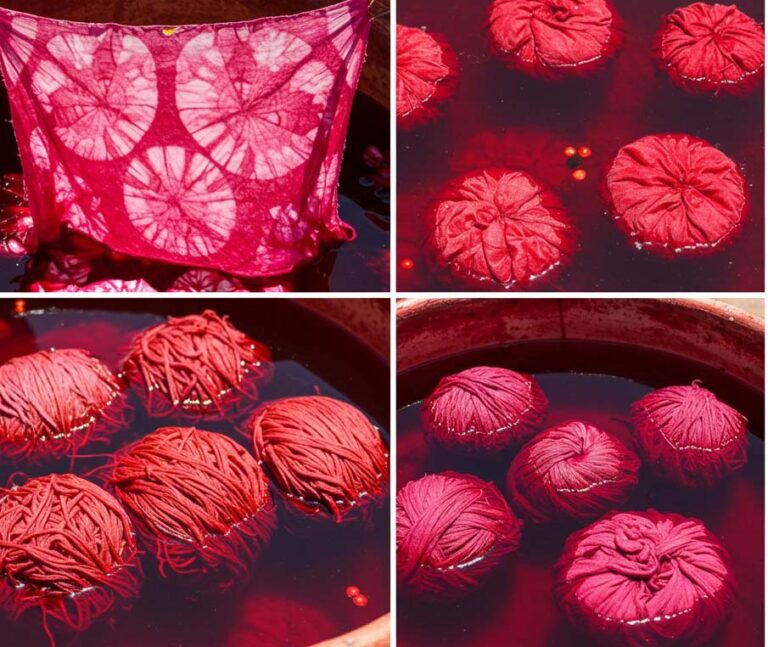Indigo and Cotton —- To Fade or Not To Fade

Indigo and Cotton fabric has a long history with something we all love to wear….Our comfy old faded pair of jeans. But can we get any more versatility out of it.

Indigo.
So most people know that jeans are dyed with indigo. The indigo dye gives them that beautiful strong blue, which after wear, fades into that warm old snuggly colour that reminds us of comfort and sunny days of old.
Indigo is still used to dye jeans, though these days it is a synthetic version rather than the natural dye we are looking at here. In our last post we looked at indigo on wool and had great results not only with colour but also its light fastness.
So next I wanted to look at cotton. Now, I know. Indigo has been around for thousands of years and used by many cultures and people that have a lot more knowledge and experience and brain power to know the full extent of indigos properties on cotton. But I just wanted to see for myself. I knew it was going to fade no matter what I did, but I wanted to see how different methods might fade more than others.
Dyeing with Indigo on cotton
So again I am not going to go into the full extent of how I did the dyeing. Though now I think of it, maybe different dyeing methods could alter these results…hmmmm another thought for another day!
With all of these experiments I used the hydrosulphite vatting method. The different factors used in this experiment involved mordanting and after care. So basically I used cotton that was mordanted with alum (refer below to procedure), cotton that was only washed prior to dyeing, and cotton that had an alum bath after dyeing.
For the alum bath after dyeing, I first allowed the dyed fabric to completely dry. It was then rinsed before being placed into an alum bath. The bath was made with 10% WOF in enough hot water(from the tap) to move gently around. The fabric was left in the alum bath overnight before being rinsed and dried.
For each of these 3 processes, I did 2 pieces of fabric. 1 that had been dipped into the vat for 3 minutes and the other had been dipped into the vat 5 times at 3 minutes each.
Results for dyeing with Indigo on cotton
The first vertical row are swatches of cotton that have been dyed and mordanted. The 2nd row shows the same fabric after being left in direct sunlight for 4 weeks.
As you can see, everything faded over time which was to be expected. There were 2 surprises that did come out of this process though.
The first was the greening of fabric that had been mordanted with alum. I hadn’t expected that though after thinking about it, it made perfect sense. At the start of the mordanting process of cotton, you use a tannin bath. This leaves a slight yellowing effect on the cotton which will turn your blue slightly green. So if you are after a true blue you really should not pre mordant your fabric unless you want to try alum without the tannin bath.
The next surprise was the cotton that had an alum bath after dyeing. It didn’t fade quite as much as the non mordanted fabric. There was definitely fading and the difference between no mordant and after mordant was only slight, but there definitely was a difference.
I hope this helps and encourages you to try your own experimenting in the world of natural dyes. 🙂

Join us on Instagram www.instagram.com/DyetoCraft
Etsy Shop Now open
If you like the idea of using organic naturally dyed threads in your craft but just don’t have the time, come and have a look at our Etsy Shop where you will find an array of beautiful colours provided by nature.







